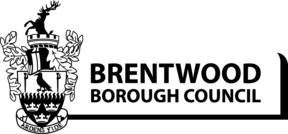Who pays council tax?
Usually one person, called the liable person, is liable to pay council tax. Nobody under the age of 18 can be a liable person. Couples living together will be held jointly and severally liable, even if there is only one name on the bill. This applies whether the couple is married, cohabiting or in a civil partnership.
If only one person lives in a property they will be the liable person. If more than one person lives there, a system called the hierarchy of liability is used to work out who is the liable person. The person at the top, or nearest to the top, of the hierarchy is the liable person. Two people at the same point of the hierarchy will be held joint and severally liable.
The hierarchy of liability is a:
- resident owner-occupier who owns either the leasehold or freehold of all or part of the property
- resident tenant
- resident who lives in the property and who is a licensee. This means a person who has the legal right to occupy the whole, or any part of the property, but has not signed a tenancy agreement
- resident living in the property, for example, a squatter
- an owner of the property where no one is resident
Usually, the hierarchy will decide liability but the owner will be the liable party if:
- the property is in multiple occupation or it has been let to more than one household (where each household has a separate and not joint rental liability)
- the people who live in the property are all under the age of 18
- the property is accommodation for asylum seekers
- the people staying in the property are there temporarily and have their main home somewhere else
- the property is a care home, hospital, hostel or women's refuge
If you don't believe you're the person who should be billed for council tax, write to us in the first instance, there is a right of appeal. If you change ownership or the liable party changes, you must tell us about that change within 21 days. We will apply a penalty if you fail to tell us about a change in circumstances.
Empty properties
Long Term Empty Properties and the Empty Home Premium
Section 11B of the Local Government Finance Act 1992 allows local authorities in England to set an additional council tax rate for long-term empty properties. A long-term empty property must have been unoccupied and substantially unfurnished for at least two years. This charge has also been known as the empty homes premium.
The premium may be applied when a property has been empty for at least two years. The two year date is irrespective of how long its current owner has owned it. So, if a purchaser buys a property which has already been empty for two years, they will become liable for the premium immediately. To end application of the premium the property must be brought back into use. If the property is occupied for a period of six weeks or less, it is regarded as not having been occupied for the purposes of calculating the two-year period.
With effect from 1 April 2022, the long-term empty premium for properties empty more than two years is 100%. This means the Council Tax will be payable at the full rate plus an additional 100% charge. For properties empty more than five years, the long-term empty premium is 200%. The Council Tax will be payable at the full rate plus an additional 200% charge. For properties empty more than ten years, the long-term empty premium is 300%. The Council Tax will be payable at the full rate plus an additional 300% charge.
There are exceptions where the empty homes premium will not be applied. For more information, view the Exemptions.
